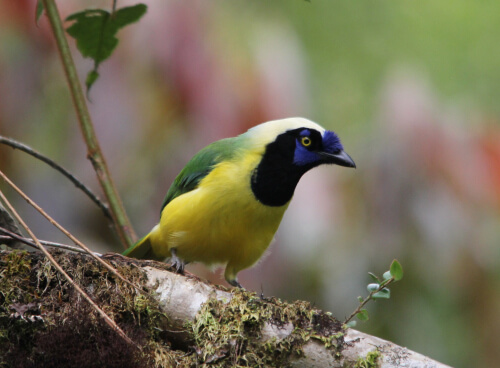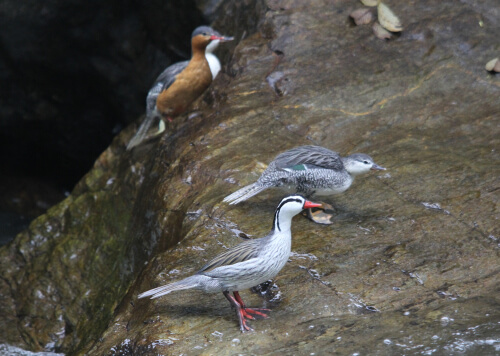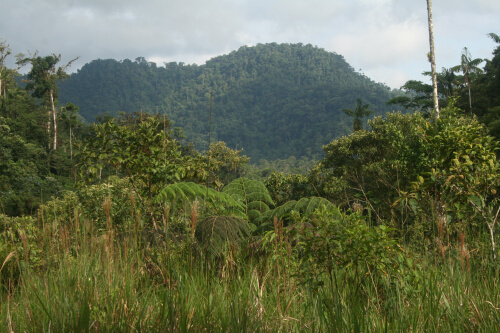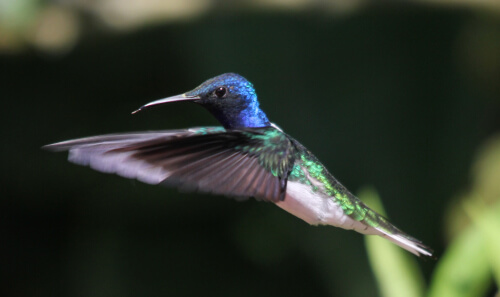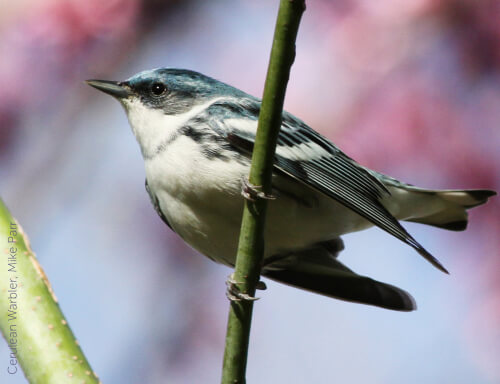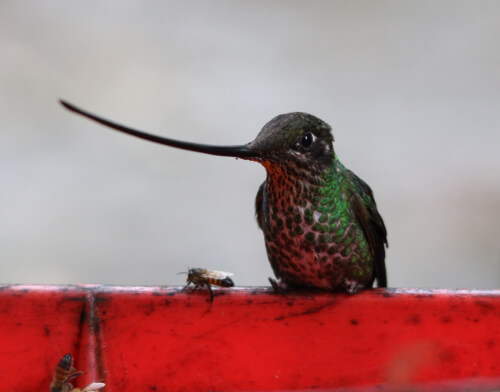Birdlife of the Equator: A Virtual Trip to Ecuador
By Benjamin Skolnik
Have you ever been to the Equator? If not, I highly recommend taking the journey to the small country of Ecuador (named after zero degrees latitude), which is a wonderfully small nation that is easily traveled, safe, and a sampler of what the tropics have to offer. Ecuador is one of several South American countries where American Bird Conservancy works.
To begin, visit a monument marking the Center of the World (Mitad del Mundo) outside the capital city of Quito. From this perch amongst the Andes Mountains, you will then need to decide whether to continue to explore the highlands north and south, head west down to drier climates and the Pacific coast, fly five hundred miles offshore to the Galapagos Islands, or descend into the Amazon basin to the east.
The birds in all of these regions are outstanding. There are the flightless, fearless birds of the Galapagos, the pockets of endemism in the highlands and drier regions, and the humid rolling hills in the northwestern Chocó region.
But for sheer abundance and variety of plant and animal life, there is no parallel to the wet eastern slope of the Andes. So let's travel downhill to the rain forest.
In two short hours, one can drop several thousand feet and traverse a variety of montane and foothill habitats that host well over 500 species of birds. On several recent trips, I have visited this region and been impressed by the diversity of birdlife. The foothill forests receive tremendous rainfall, lying just above the Amazon basin, and harbor lush habitat for tropical species, including our very own warblers.
Cerulean Warblers–a rapidly declining migratory species–flock to these moist slopes and spend the winter here. I was lucky to glimpse wintering Cerulean Warblers at the Wild Sumaco lodge and Narupa Reserve.
Within the reserve I visited several pasturelands where wood-pewees watched. I discussed with forest guards how they will use machetes to clear weeds surrounding naturally emerging native trees. Our aim is to recreate mature woodlands preferred by the Ceruleans.

Even with his hands up, the author is practically dwarfed by tall grass in Narupa Reserve, which can easily overtake emerging trees. Photo by Benjamin Skolnik
Narupa Reserve is yet another place that is not only improving for birds, but for bird lovers, too. A new tent platform was built so visitors can stay a few nights and explore the recently constructed trail system to find warblers, Military Macaws, and–if you are lucky–an Orange-breasted Falcon or two.
We hope to see you in Ecuador soon! Learn more about places where you can participate in incredible birding while helping to save species on our Conservation Birding website.
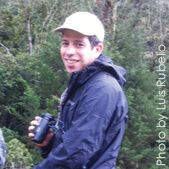 Benjamin Skolnik is an International Conservation Officer at American Bird Conservancy. He works with partners in Ecuador and Colombia on projects for land protection, ecotourism, and conservation birding. He also coordinates the Alliance for Zero Extinction, a global effort to curb species loss. He is fluent in Spanish and can speak basic Quechua. Benjamin lives in historic Greenbelt, Maryland with his family.
Benjamin Skolnik is an International Conservation Officer at American Bird Conservancy. He works with partners in Ecuador and Colombia on projects for land protection, ecotourism, and conservation birding. He also coordinates the Alliance for Zero Extinction, a global effort to curb species loss. He is fluent in Spanish and can speak basic Quechua. Benjamin lives in historic Greenbelt, Maryland with his family.





































